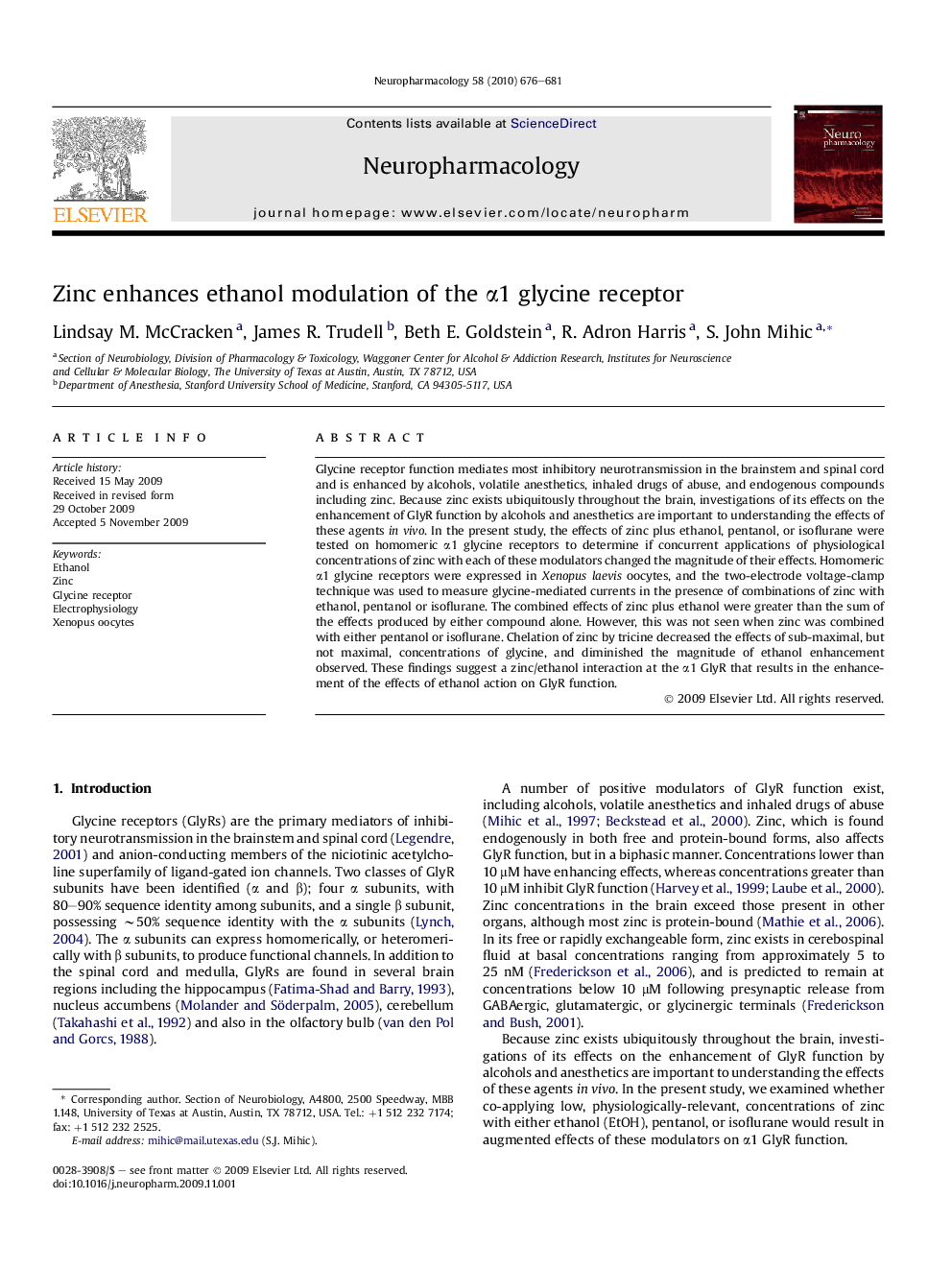| Article ID | Journal | Published Year | Pages | File Type |
|---|---|---|---|---|
| 5816142 | Neuropharmacology | 2010 | 6 Pages |
Glycine receptor function mediates most inhibitory neurotransmission in the brainstem and spinal cord and is enhanced by alcohols, volatile anesthetics, inhaled drugs of abuse, and endogenous compounds including zinc. Because zinc exists ubiquitously throughout the brain, investigations of its effects on the enhancement of GlyR function by alcohols and anesthetics are important to understanding the effects of these agents in vivo. In the present study, the effects of zinc plus ethanol, pentanol, or isoflurane were tested on homomeric α1 glycine receptors to determine if concurrent applications of physiological concentrations of zinc with each of these modulators changed the magnitude of their effects. Homomeric α1 glycine receptors were expressed in Xenopus laevis oocytes, and the two-electrode voltage-clamp technique was used to measure glycine-mediated currents in the presence of combinations of zinc with ethanol, pentanol or isoflurane. The combined effects of zinc plus ethanol were greater than the sum of the effects produced by either compound alone. However, this was not seen when zinc was combined with either pentanol or isoflurane. Chelation of zinc by tricine decreased the effects of sub-maximal, but not maximal, concentrations of glycine, and diminished the magnitude of ethanol enhancement observed. These findings suggest a zinc/ethanol interaction at the α1 GlyR that results in the enhancement of the effects of ethanol action on GlyR function.
